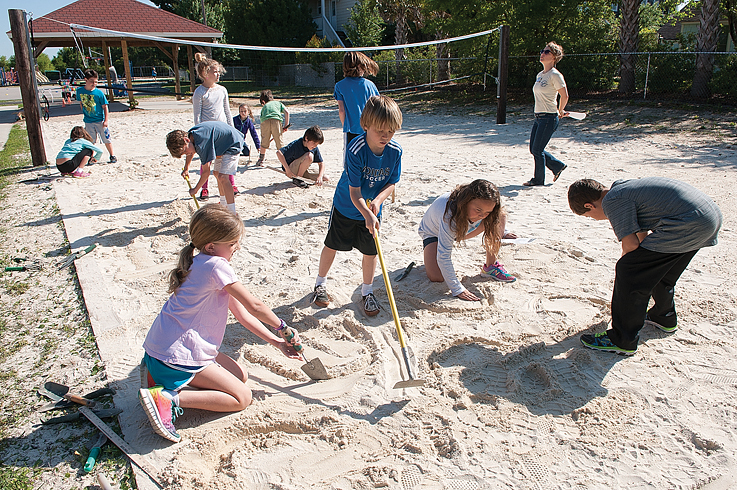On the front lawn of Wrightsville Beach School, a group of third graders enthusiastically dug into buckets filled with sand. Plastic shovels were provided, but their hands proved more efficient tools as they searched for sea turtle hatchlings and eggs.
The turtles were plastic, and the eggs ping-pong balls, some of which were split in two to mimic an egg that hatched. Rocks represented hatchlings that did not survive.
“We found a turtle! We’re so good at this,” exclaimed Sam Dieffenbauch. Similar choruses of “I found one” and “I found an egg” were repeated as the children conducted their mock nest excavations.
As much fun as it was for the children to make a mess on school time, this was a lesson nonetheless, led by volunteers with the Wrightsville Beach Sea Turtle Project. It was the school’s first Turtle Day, organized by marine science coordinator Cissie Brooks. Activities included the turtle dig and a turtle crawl, during which youngsters drew loggerhead, leatherback and green sea turtle tracks on the sand-covered volleyball court.
Each turtle leaves different tracks, and volunteers can identify which species crawled ashore to nest on the Wrightsville Beach shoreline during the summer.
Lucretia Tyckoski, who supervised the nest excavation exercise, told the children sand temperature is a factor in determining the gender of the young turtles. Warm sand produces more females, while the males thrive in a cooler nesting environment, she said. She then told them why that is important.
As the climate warms, fewer males will hatch, and that could affect the number of nests found on the beaches.
The volunteers appeared to have as much fun as their young pupils Tuesday, but they also take their unpaid work seriously.
They walk stretches of the beach strand each summer, watching for signs of female turtles arriving to lay their eggs, protecting those nests from the feet of beachgoers and vandals, and eagerly anticipating the moonlit evening when the hatchlings emerge from their sandy nests and head toward the vast ocean.
Sometimes the wait is long, Tyckoski said, but worth it.
“You can wait for weeks,” she said, “because you want to be there.”
email [email protected]




